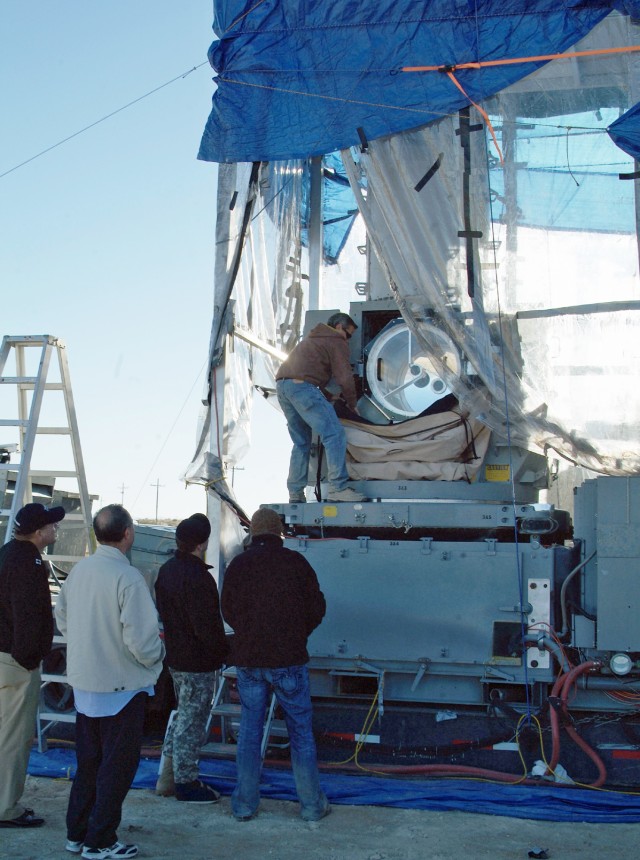
WHITE SANDS MISSILE RANGE, N.M. (Army News Service, Jan.30, 2009) - White Sands Missile Range is testing a new weapon system known as the Laser Centurion Demonstrator.
The system, developed by Raytheon, combines proven radar and threat-detection technology with the latest in laser weapons. This demonstration model is intended to prove the capabilities and effectiveness of the new laser weapon as part of the Laser Area Defense Systems program, officials said.
The new laser system is designed to replace the 20mm cannon on the Navy's Phalanx system and the Army's Centurion system, according to Raytheon's Web site.
The integration of an advanced directed energy weapon into an existing conventional weapon system helps keep the system's costs down as well as allowing an easier transition from one system to another, officials said.
The Phalanx is an air and missile-defense system used on nearly every ship in the fleet. Converted to be transported and fired from a trailer, it is also used by the Army under the name Centurion to provide defense from air and missile threats as well as defense against mortar and artillery attacks. As an upgrade to the Phalanx and Centurion, the laser system is a program that is jointly funded by the Navy and Army. Other services are also interested in the laser itself for possible integration into other weapon systems.
"Directed energy is getting more and more prevalent in weapon systems," said Col. Bruce Lewis, White Sands Test Center commander.
Initial tests with the demonstrator have been positive. The laser has proven capable of rapidly penetrating armor plating even when not at full power, and system setup has been very easy.
"We are excited to be testing system capabilities by shooting down mortar rounds in the coming weeks," said Sal Rodriguez, senior flight test engineer with the Naval Surface Warfare Center, Port Hueneme Division, Sands Missile Range detachment. Rodriguez also thanked all the members of Team White Sands who have supported the program while it prepares to test the system.
The Laser Centurion will fill the same role as the conventional cannon-equipped version while providing a commander with more options and capabilities, officials said. The laser-based system will still be able to engage targets like mortars, rockets, and missiles, but without the drawbacks of limited ammunition. Also, since the laser does not use any kind of solid shot like the cannon, it can be used to better defend populated areas without the fear of the "20mm shower" that conventional air-defense guns cause when their bullets fall back to earth.
Since it is also able to be used against small surface targets, the laser will be able to be used in peacekeeping and anti-piracy missions without drawing the kind of attention a cannon would.
"At (short range) it's a nice deterrent, and without the big bang of a gun," said Lt. Shawn Mitchell, assistant officer in charge of the Naval Surface Warfare Center, Port Hueneme Division's WSMR detachment.
Unlike previous laser systems of this kind that used chemical reactions to generate the necessary power for the laser, the Laser Centurion uses a solid-state laser that can run off any appropriately powerful source of electricity.
"It's like the difference between an electric car and a gas-burning car... this is a very green system," said Dan McMaster, a program manager from Raytheon. This makes the Laser Centurion a very flexible weapon system as it will be able to run off land-based generators and power supplies just as well as it will off of a ship's reactor.
(Drew Hamilton writes for the Missile Ranger newspaper at White Sands Missile Range, N.M.)

Social Sharing